Hygrophila guianensis
Scientific name: Hygrophila guianensis
Family: Acanthaceae
Maximum size reached under cultivation: 15 - 40 cm (5.91 - 15.75 inch)
014
Recommended pH range: 6 - 8
Recommended water hardness: 4 - 18°dGH (71.43 - 321.43ppm)
0°C 32°F30°C 86°F
Recommended temperature range: 20 - 30 °C (68 - 86°F)
Preferred propagation method: Cuttings
Native to: South America
Growth rate: Fast
Recommended substrate: Fine gravel
Lighting requirements: Bright
Ideal placement in tank: Background
Common Name
Guiana Hygro
Origin
Hygrophila guianensis originates from South America, particularly from regions such as Guyana, Brazil, and Venezuela. It naturally grows along riverbanks, in wetlands, and flooded forest areas where it experiences both submerged and emersed conditions depending on water levels.
Growing Conditions
This species can grow in both submerged and emersed environments. When grown emersed, it produces more rigid leaves and may bloom with small purple to blue flowers. In submerged aquariums, the plant develops softer green foliage and stretches vertically toward the light.
Hygrophila guianensis prefers bright lighting to maintain compact and healthy growth. In low light, stems may elongate excessively and lose their lower leaves. It thrives in a pH range of 6.0 to 8.0 and water hardness between 4 - 18 dGH. The ideal temperature range is 20 - 30 °C (68 - 86°F). Growth can be further enhanced by using CO2 supplementation and liquid fertilizers.
Planting Area
With a growth height of 15 to 40 cm (5.91 - 15.75 inches), Hygrophila guianensis is best placed in the background of aquariums. It adds height and vertical structure, especially when planted in small clusters. In open-top tanks, it may extend above the waterline, adding a striking emergent element to the aquascape.
Propagation
Hygrophila guianensis propagates easily through cuttings. To propagate, cut a healthy stem section and remove the lower leaves. Gently plant the cutting into fine gravel substrate, avoiding stem damage. Roots will quickly form, and the cutting will grow into a new plant. Under ideal conditions, this species can form dense stands through repeated cuttings.
Difficulty
Hygrophila guianensis is considered easy to grow, making it suitable for beginner and experienced aquarists alike. Its fast growth helps prevent algae and supports a healthy aquatic environment. However, regular trimming is required to prevent shading and encourage bushier form.
Short Description
Hygrophila guianensis, also known as Guiana Hygro, is a vigorous and attractive background plant ideal for tropical aquariums. It tolerates a wide range of water parameters and grows well in both submerged and emersed setups. The plant responds positively to CO2 and nutrient-rich substrates, developing lush green foliage. If nutrients are lacking, lower leaves may fall off. Its adaptability, rapid propagation via cuttings, and decorative height make it a popular choice for aquascapers aiming to create a natural, jungle-like appearance.
Frequently Asked Questions about Hygrophila guianensis
-
Can Hygrophila guianensis grow without CO2 injection?
Yes, it can grow without CO2, but adding CO2 significantly enhances its growth rate and leaf density. Without it, growth will be slower and leggier.
-
Does Hygrophila guianensis require high lighting?
Bright lighting is recommended to promote compact growth and vibrant green coloration. It can survive in moderate light but may grow less densely.
-
Can this plant be grown emersed?
Yes, Hygrophila guianensis grows well in both submerged and emersed conditions. In open-topped aquariums or paludariums, it may extend above the water surface and develop thicker leaves.
-
How do I propagate Hygrophila guianensis?
It is easily propagated through stem cuttings. Cut a healthy stem, remove the bottom leaves, and plant it in nutrient-rich substrate. Roots will develop within days.
-
Why are the lower leaves of my plant falling off?
This is usually a sign of nutrient deficiency, especially lack of iron or macronutrients. Ensuring proper fertilization and water column nutrition can prevent this issue.

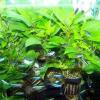 Hygrophila corymbosa
Hygrophila corymbosa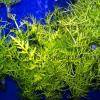 Hygrophila difformis
Hygrophila difformis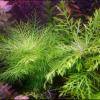 Hygrophila difformis variegated
Hygrophila difformis variegated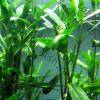 Hygrophila polysperma
Hygrophila polysperma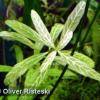 Hygrophila polysperma ‘Rosanervig’
Hygrophila polysperma ‘Rosanervig’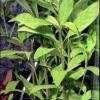 Hygrophila salicifolia
Hygrophila salicifolia Synnema triflorum
Synnema triflorum